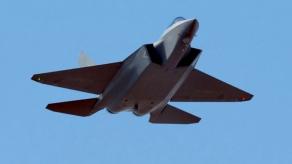Special Forces of the russian Black Sea Fleet are training to intercept Ukraine's Magura V5 unmanned kamikaze vessels by utilizing small copter-type FPV drones. An episode of such training was published by a russian military blogger, it shows drone operators drop their UAVs right from the open hatch of a Mi-8 helicopter, from then on, the FPV needs to find the target on its own.
Although the idea is quite simple, the potential of this new tactic should not be underestimated: first and foremost, it allows the russian crews to stay a safe distance away from the portable air defense systems that Ukrainian maritime drones have been using recently for self-defense.
Read more: russians Develop New Drone System for Dropping PFM-1 Mines
Because, why not: Special Forces of the Russian Black Sea Fleet training to destroy kamikaze USVs from helicopter using FPV drones. pic.twitter.com/Y34I8jFtP6— Clash Report (@clashreport) September 30, 2024
Particularly, R-73 missile launchers have been seen with the Magura V5 unmanned surface vessels, responsible for multiple suicide attacks on russian warships operating in the Black Sea.

Unlike the frontlines on the land, the naval domain of the russian-Ukrainian war is not so saturated with electronic warfare systems. Without interference, FPV drones can easily travel as far as 20 to 30 km from the transmitter antenna, especially when it's carried by a helicopter at elevated altitudes.
The operating range of an R-73 missile, on the other hand, when launched from the surface is only 12 km. That's not to mention how difficult it is for the missile's heat-seeking homing head to lock on target while being rocked by the waves. That makes an FPV drone an affordable and theoretically potent solution for safe standoff attacks on kamikaze boats.

The emergence of this tactic marks another round of technological warfare between russia and Ukraine. After all, the use of R-73 missiles was precisely the answer that Ukrainians came up with following the russian decision to actively deploy helicopters to hunt Magura V5s, whose crew members were shooting the drones with machine guns and small arms. Helicopters sent to ward off Maguras were observed as early as December 2023.
Now, Ukraine needs to find a new method to deal with the russian FPV tactics. An obvious solution would be to install electronic warfare equipment on their naval drones. It entails the need to employ swarm attacks when the main force of explosive kamikaze Maguras are covered by reusable supporting units carrying anti-aircraft missiles and anti-drone interference generators. That is how the modern "drone wars" look like.
Read more: russian Occupiers Acknowledge Lacking Capabilities to Fend Off Night Attacks by Surface Kamikaze Drones














